
Sri Lanka, often hailed as the pearl of the Indian Ocean, captivates travelers with its pristine beaches, verdant landscapes, and exuberant culture. While the island is a treasure trove of coastal splendors, the East Coast emerges as particularly remarkable for its unspoiled beauty and distinctive allure. Let’s embark on a journey to uncover the finest beaches in East Sri Lanka, where every stretch of sand is a narrative of nature’s exquisite craftsmanship.
The East Coast of Sri Lanka weaves a diverse tapestry of landscapes, ranging from the vibrant streets of Batticaloa to the tranquil shores of Arugam Bay. This region, still relatively undiscovered, promises an authentic retreat into serene natural settings and cultural richness.
More than just visually stunning, the beaches on the East Coast offer a variety of experiences. From exhilarating water sports that get your adrenaline pumping to peaceful moments of solitude that allow for personal reflection, these coastal gems provide a gateway to the diverse charms of East Sri Lanka’s natural beauty. Whether you’re a surfer, a sunbather, or a cultural enthusiast, exploring these beaches is an adventure into the heart of the island’s scenic wonders.
Arugam Bay Beach
Arugam Bay, located on the east coast of Sri Lanka, is renowned not only for its natural beauty but also as a top surfing destination globally. This charming crescent-shaped cove is surrounded by verdant jungle and dotted with rustic accommodations, creating a laid-back, bohemian vibe that attracts a diverse mix of travelers.
Surfing
Arugam Bay is primarily known for its surf points, which are considered among the best in the world. The main break, known as Main Point, is situated at the southern end of the bay and offers challenging waves that attract seasoned surfers, particularly from April to October, during the peak surfing season. The waves here can offer rides up to 400 meters long, providing exhilarating experiences for surf enthusiasts. Besides Main Point, there are several other spots like Baby Point, which is more suitable for beginners, and Pottuvil Point, which offers long, lazy rides perfect for longboarders.
Beach and Scenery
The beach itself is a stunning stretch of golden sand, framed by the rolling waves on one side and lush vegetation on the other. It’s perfect for long, leisurely walks or just relaxing and soaking up the sun. The sunrise over the bay is particularly spectacular and worth waking up early for. The relatively untouched nature of the area makes it ideal for those seeking a tranquil escape from the busier tourist spots.
Activities and Attractions
Beyond surfing, Arugam Bay offers a variety of activities. For wildlife enthusiasts, the nearby Kumana National Park is a bird sanctuary where one might spot a wide range of bird species, including the elusive Sri Lankan leopard and elephants during a safari. Additionally, the lagoon just north of the bay provides opportunities for bird watching and quiet boat tours that showcase the natural beauty of the region.
Culture and Cuisine
The local community in Arugam Bay is welcoming, with a mix of Sinhalese, Tamil, and Muslim influences, which is reflected in the diverse local cuisine available in the area. Visitors can enjoy everything from traditional Sri Lankan dishes to fresh seafood and international fare at various restaurants and cafes along the beach.
Accommodation
Arugam Bay offers a range of accommodations, from basic guesthouses and backpacker hostels to more upscale hotels. Many of these are located right at the edge of the beach, offering easy access to the ocean and panoramic views.
Getting There and Around
Arugam Bay is about a 7-hour drive from Colombo or a shorter drive from cities like Kandy or Ella. The journey itself is scenic, with routes passing through lush forests and alongside coastal areas. Once in Arugam Bay, getting around is easy with tuk-tuks readily available for short trips.
Arugam Bay’s combination of natural beauty, vibrant culture, and a plethora of activities makes it a unique destination that offers something for everyone—from the adventure seekers to those just looking to unwind and enjoy a slice of paradise.
Dutch Bay Beach – Trincomalee
Dutch Bay Beach in Trincomalee is a serene and picturesque coastal spot that encapsulates the historical charm and natural beauty of Sri Lanka’s eastern coastline. Trincomalee, known for its deep natural harbor and rich history, provides a stunning backdrop to Dutch Bay, making it a captivating destination for travelers.
Location and Landscape
Dutch Bay is situated within the city of Trincomalee, offering easy access while still retaining a peaceful atmosphere away from the busier central areas. The beach curves gently along the bay, with soft golden sands meeting the clear, azure waters of the Indian Ocean. The natural setting is enhanced by the lush greenery that fringes the beach, creating a tranquil and inviting environment for relaxation and leisure activities.
Historical Significance
The name “Dutch Bay” harks back to the colonial era when Trincomalee was a significant outpost for the Dutch East India Company. The bay and its surroundings are steeped in history, with various colonial structures and ruins nearby, including the famed Fort Frederick, which the Dutch reconstructed in 1624. The area’s rich history makes it not just a beach destination but also a place of cultural and historical exploration.
Activities and Attractions
Dutch Bay Beach is ideal for a variety of activities. Its calm waters are perfect for swimming, and the expansive sandy shores offer great opportunities for sunbathing, beach games, and leisurely walks. The nearby coral reefs provide excellent spots for snorkeling, where visitors can explore the vibrant marine life of Trincomalee.
For those interested in history and architecture, a visit to Fort Frederick and the ancient Koneswaram Temple, located on a promontory overlooking the ocean, is highly recommended. These sites provide a glimpse into the area’s past and offer panoramic views of the surrounding coastline and city.
Local Life and Cuisine
The beach is a reflection of Trincomalee’s diverse cultural tapestry, influenced by Tamil, Muslim, and Sinhalese communities. The local cuisine available around Dutch Bay is a testament to this diversity, with seafood being a significant highlight. Visitors can enjoy fresh catches from the ocean, prepared in local spices and styles, at the various eateries and stalls along the beach.
Best Time to Visit
The best time to visit Dutch Bay is between May and September when the weather is predominantly dry and sunny, making it ideal for beach activities and water sports. During this period, the sea is usually calm, offering clear conditions for snorkeling and swimming.
Accessibility
Trincomalee is well-connected by road to major cities in Sri Lanka, including Colombo and Kandy. Dutch Bay is conveniently located within the city limits, making it easily accessible by tuk-tuk, bike, or even on foot from most parts of the town.
Dutch Bay Beach in Trincomalee is more than just a beautiful beach; it is a blend of natural beauty, historical richness, and cultural diversity, offering visitors a unique and enriching coastal experience. Whether you are seeking relaxation on the beach, an adventure in the water, or a journey through history, Dutch Bay has something to offer every traveler.
Passikudah beach
Passikudah Beach, located on the eastern coast of Sri Lanka in the Batticaloa District, is renowned for its stunning beauty and tranquil atmosphere. Known for its shallow coral-rich waters and long stretches of pristine sandy beaches, Passikudah has become a favorite destination for both locals and tourists seeking a peaceful beach experience.
Location and Features
Passikudah is situated in a bay that allows for one of the longest stretches of shallow coastline in the world. Because of its unique topography, visitors can walk out several hundred meters into the sea with the water level remaining only a few feet deep. This feature makes it exceptionally safe and ideal for swimming, and it’s particularly suitable for families with children.
Water Sports and Activities
The calm and clear waters of Passikudah are perfect for a variety of water sports. Activities such as snorkeling, windsurfing, water skiing, and kayaking are popular, with equipment rental and lessons readily available along the beach. The coral reefs nearby are home to a colorful array of marine life, offering an excellent opportunity for snorkeling enthusiasts to explore underwater wonders.
Resorts and Accommodation
Over the years, Passikudah has developed into a luxurious resort destination. The beachfront is lined with a range of accommodation options, from high-end resorts to more budget-friendly hotels. Many of these resorts offer direct access to the beach, along with pools, spas, and other amenities that ensure a comfortable and relaxing stay.
Environmental and Cultural Preservation
While Passikudah has become more developed over the years, there is a strong emphasis on environmental conservation. Efforts are made to protect the local coral reefs and marine life, which are integral to the area’s ecological balance and appeal. The community and local authorities are actively involved in maintaining the cleanliness and natural beauty of the beach.
Accessibility
Passikudah is easily accessible by road from major cities like Colombo and Kandy. The nearest town is Batticaloa, which provides additional local flavor and history for visitors interested in exploring more than just the beach. Visitors can also experience local culture, cuisine, and the warm hospitality of the Eastern province.
Best Time to Visit
The best time to visit Passikudah is from May to October when the weather is predominantly dry in this part of the country. During these months, the sea is calm, and the skies are clear, making it ideal for water sports and beach activities.
Passikudah Beach is more than just a scenic location; it is a peaceful retreat that offers both relaxation and adventure in a stunning natural setting. With its shallow and safe waters, luxurious resorts, and commitment to environmental preservation, Passikudah remains one of the most cherished beach destinations on Sri Lanka’s eastern coast.
Nilaveli Beach
Nilaveli Beach, located in the Trincomalee district on the northeast coast of Sri Lanka, is one of the most serene and beautiful beaches in the country. Known for its soft white sands and clear blue waters, Nilaveli offers an idyllic setting for relaxation and an array of water-based activities. This beach, stretching for several kilometers, allows ample space for everyone to enjoy their day without feeling crowded.
Location and Features
Nilaveli is renowned for its calm and inviting waters, making it an ideal spot for swimming and sunbathing. The beach is characterized by its long stretches of unspoiled sand, bordered by lush greenery and palm trees that sway gently in the breeze. The pristine condition of the beach and its tranquil atmosphere make it a perfect getaway for those seeking peace away from the busier tourist spots.
Water Sports and Activities
The beach’s proximity to some of the best coral reefs on the island makes it a popular destination for snorkeling and diving enthusiasts. The famous Pigeon Island National Park, a short boat ride away, offers spectacular snorkeling and diving opportunities with its abundant coral and marine life. Besides water sports, Nilaveli is also great for activities like whale and dolphin watching, which are best experienced between May and October.
Accommodation and Amenities
Nilaveli hosts a range of accommodation options, from luxury resorts to more modest guesthouses, catering to all preferences and budgets. Many of these are situated directly on the beach, providing guests with stunning sea views and easy access to the beach. The resorts often feature restaurants, bars, and pools, enhancing the comfort of their guests.
Cultural and Historical Attractions
While the beach itself is a major draw, the surrounding area of Trincomalee is steeped in history and culture. Visitors can explore the ancient Koneswaram Temple, which offers panoramic views of the surrounding ocean and landscape. The temple, situated atop Swami Rock, is a significant pilgrimage site and adds a spiritual dimension to the visit.
Accessibility
Nilaveli is accessible by road from Trincomalee, which is well-connected by bus and train services from major cities like Colombo and Kandy. The drive from Trincomalee to Nilaveli takes about 20 minutes, making it an easy day trip for those staying in the city.
Best Time to Visit
The best time to visit Nilaveli Beach is from April to October, during the dry season, when the weather is most favorable for beach activities and water sports. This period avoids the northeast monsoon, which can bring heavy rains and rough seas.
Nilaveli Beach is more than just a beach; it is a destination that offers a blend of natural beauty, leisure activities, and cultural experiences. Whether you’re looking to unwind on its tranquil shores, explore vibrant underwater worlds, or discover the rich history of the region, Nilaveli provides a perfect backdrop for a memorable escape.
Uppuveli Beach – Trincomalee
Uppuveli Beach, located just a few kilometers north of Trincomalee on Sri Lanka’s eastern coast, is a stunning seaside destination known for its golden sands, calm turquoise waters, and laid-back atmosphere. This beach is a popular spot for both relaxation and leisure activities, offering visitors a more tranquil alternative to the often busier beaches found elsewhere.
Location and Features
Uppuveli is less commercialized than some of Sri Lanka’s other beach destinations, which helps maintain its serene charm. The beach stretches for several kilometers, providing ample space for visitors to spread out and enjoy the sun without the crowds. The palm-lined shore, soft sands, and gentle waves create an ideal setting for swimming, sunbathing, and simply unwinding under the tropical sun.
Water Sports and Activities
Uppuveli Beach is not only perfect for those looking to relax but also offers plenty of activities for the more adventurous. The clear, shallow waters near the beach are suitable for snorkeling and swimming. For those interested in diving, there are several reputable dive centers located nearby that offer trips to local dive sites as well as Pigeon Island National Park, known for its vibrant coral reefs and diverse marine life.
Accommodation and Amenities
Uppuveli boasts a range of accommodation options, from luxurious beachfront resorts to charming guesthouses and budget-friendly hostels. Many of these establishments are nestled right along the shoreline, offering stunning ocean views and easy beach access. The area also features a variety of restaurants and cafes where visitors can sample local Sri Lankan cuisine as well as international dishes, often with an emphasis on seafood freshly caught from the nearby waters.
Cultural and Historical Attractions
Beyond the beach, the Trincomalee area is rich in cultural and historical sites. Visitors can explore the ancient Koneswaram Temple, situated on a cliff at the edge of Trincomalee, providing spectacular views over the Indian Ocean. The temple is a significant religious site and offers insights into the local Tamil Hindu culture.
Accessibility
Uppuveli is easily accessible from Trincomalee town, which acts as a transportation hub with connections by bus and train to major cities like Colombo and Kandy. The proximity to Trincomalee makes Uppuveli a convenient option for day trips or longer stays.
Best Time to Visit
The ideal time to visit Uppuveli Beach is from April to October when the weather is predominantly dry and sunny, making it perfect for beach activities and exploring the outdoors. This period aligns with the region’s peak tourist season, so visitors can enjoy a lively atmosphere and fully operational amenities.
Uppuveli Beach offers a peaceful yet engaging beach experience, combining natural beauty with a range of activities and cultural experiences. Whether you’re in the mood for relaxation by the sea, adventurous water sports, or exploring historical sites, Uppuveli provides a memorable and diverse getaway in the heart of Sri Lanka’s eastern coast.
Arisimale Beach
Arisimale Beach, situated in the northeastern coast of Sri Lanka, near the town of Pulmoddai, is a unique and lesser-known gem that captivates visitors with its distinctive landscape and tranquil atmosphere. Unlike the typical sandy beaches that Sri Lanka is famous for, Arisimale Beach is notable for its coarse sand, which almost resembles tiny pebbles, giving it the name “Arisimale,” which translates to “rice sand” in the local language.
Location and Features
Located in the Trincomalee District, Arisimale Beach is relatively secluded, providing a peaceful escape from more crowded tourist spots. The beach’s unique sand not only offers a different tactile experience but also creates a gentle, soothing sound as the waves retreat back into the ocean. The beach stretches for about a kilometer, bordered by lush greenery and rocky outcrops, creating a picturesque setting perfect for relaxation and introspection.
Water Activities and Relaxation
The waters at Arisimale are generally calm, making it suitable for swimming, though visitors should always be mindful of changing currents. The beach is also ideal for long walks and meditation, especially during sunrise or sunset when the area is bathed in soft, golden light. Due to its relatively remote location, Arisimale Beach remains unspoiled by heavy development, allowing nature lovers to enjoy its pristine beauty in peace.
Cultural Significance
Arisimale Beach is not just a natural attraction but also holds historical and cultural significance. It is located near ancient Buddhist ruins and is thought to be one of the first landing places of Buddhism in Sri Lanka. This adds an enriching layer of historical depth to visits, as travelers can explore nearby archaeological sites and learn about the region’s rich heritage.
Accessibility
Access to Arisimale Beach can be a bit challenging due to its remote location. The nearest major town is Pulmoddai, and from there, visitors can travel by local transport or private vehicle to the beach. The journey to Arisimale offers scenic views of the countryside and provides an opportunity to experience the rural beauty of this part of Sri Lanka.
Best Time to Visit
The best time to visit Arisimale Beach is from May to September, during the dry season for the eastern coast of Sri Lanka. During this time, the sea is calm, and the weather is conducive to beach activities and exploring the nearby historical sites.
Arisimale Beach is a perfect destination for those seeking a quiet beach experience, away from commercialized tourist spots. Its unique sand, serene waters, and historical backdrop provide a distinctive and rewarding experience for travelers looking to explore the natural and historical treasures of Sri Lanka’s northeastern coast.
Kalkudah Beach
Kalkudah Beach, nestled on the eastern coast of Sri Lanka, is renowned for its idyllic beauty, pristine sands, and tranquil waters. Located near the town of Batticaloa, Kalkudah, together with its neighboring Passekudah Beach, forms one of the most serene beach destinations in the country. This area is famed for its long, shallow coastline which allows visitors to walk out far into the sea with the water level staying low, making it perfect for families and swimmers of all skill levels.
Location and Features
Kalkudah Beach boasts a wide, expansive stretch of fine golden sand bordered by clear blue waters on one side and lush palm trees on the other. The beach is protected by a long stretch of reef that forms a natural barrier, creating calm and safe swimming conditions within its bay. This natural protection also makes the area an excellent spot for water sports like snorkeling and wind-surfing, as the reef supports a vibrant marine ecosystem.
Activities and Relaxation
Apart from its natural beauty, Kalkudah Beach is less developed and less crowded compared to more popular Sri Lankan beaches, offering a peaceful retreat for those looking to escape the hustle and bustle. The gentle waves and shallow waters make it a fantastic place for leisurely swims and snorkeling, where both adults and children can explore the underwater world safely. For the more adventurous, wind-surfing and paddle-boarding are popular activities due to the favorable wind conditions.
Accommodation and Amenities
Over the years, Kalkudah has seen a gradual development in terms of tourism infrastructure. The area now hosts a range of accommodation options, from luxury resorts and hotels to more budget-friendly guesthouses, many of which offer direct access to the beach. Despite this development, Kalkudah Beach has maintained a balance, ensuring that the natural beauty of the area remains undisturbed.
Accessibility
Kalkudah Beach is accessible by road and is about a 6-7 hour drive from Colombo. It can also be reached from the nearby cities of Batticaloa and Trincomalee, which have more frequent connections to other parts of the island. The roads leading to Kalkudah are scenic, winding through lush landscapes and rural villages, adding to the overall experience of visiting this tranquil destination.
Best Time to Visit
The best time to visit Kalkudah Beach is from May to September, during the dry season on the east coast of Sri Lanka. During this period, the sea is calm, and the weather is ideal for beach activities and soaking up the sun.
Kalkudah Beach is a perfect destination for those seeking tranquility and natural beauty. With its crystal-clear waters, soft sandy beaches, and a relaxed vibe, it offers a slice of paradise away from the commercial tourism of Sri Lanka’s more frequented beach spots. Whether you’re looking to unwind by the sea, engage in water sports, or simply enjoy the scenic views, Kalkudah Beach provides a serene and picturesque setting for a memorable vacation.



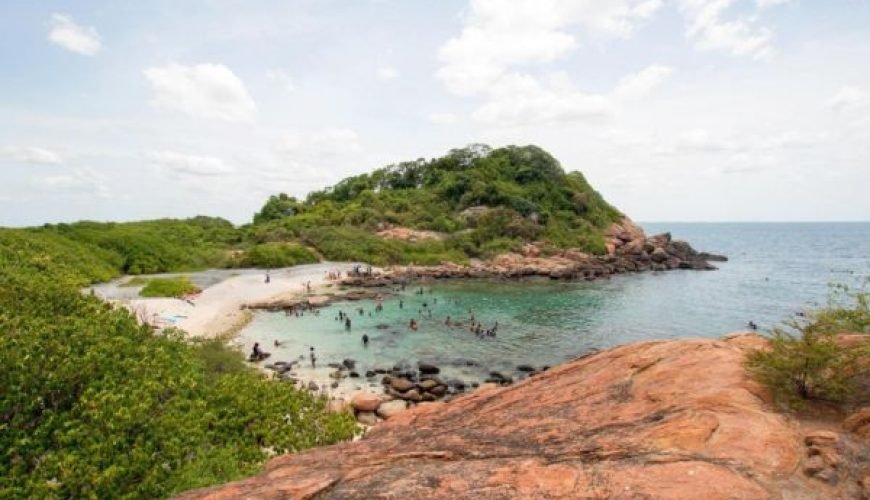

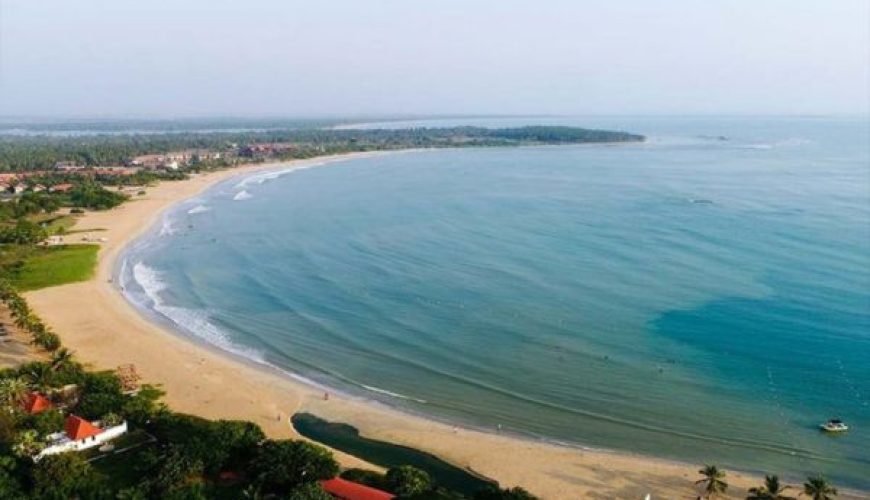
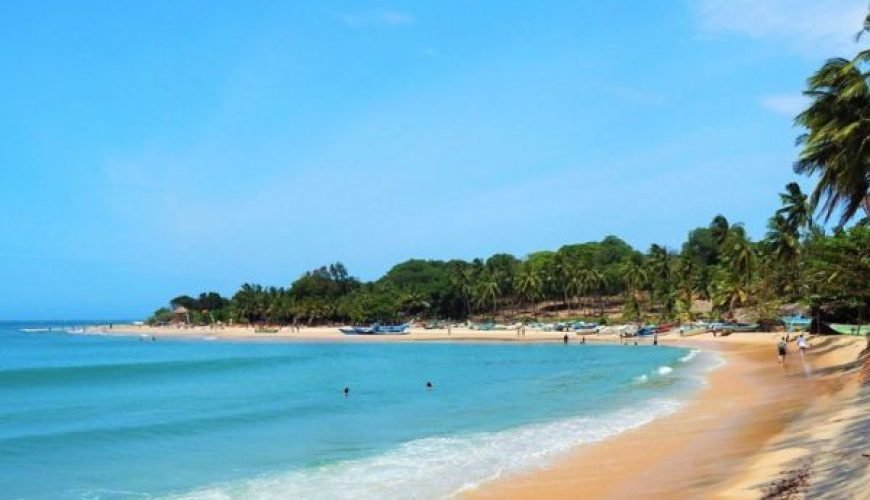
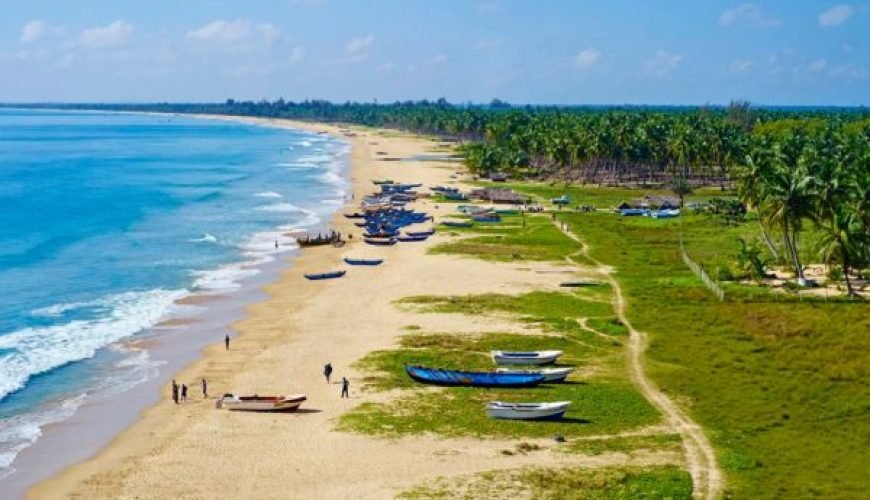

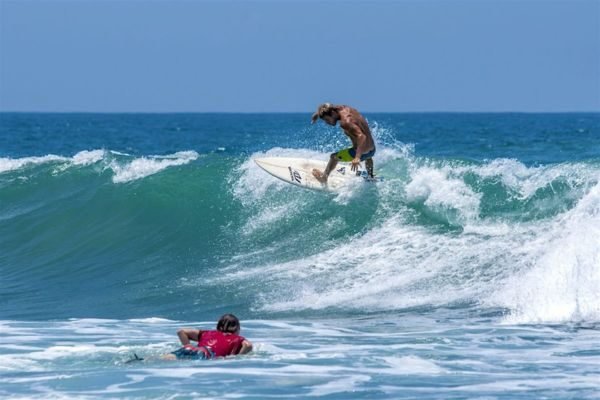

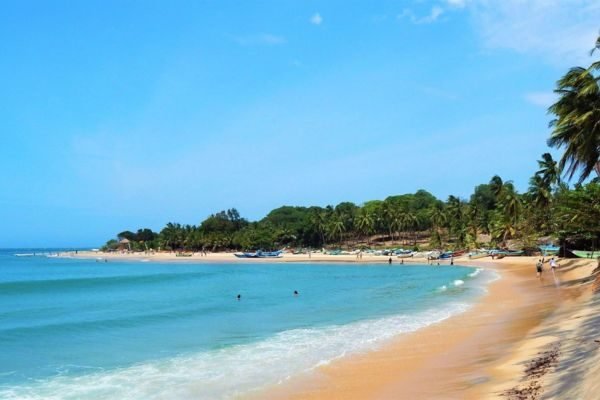


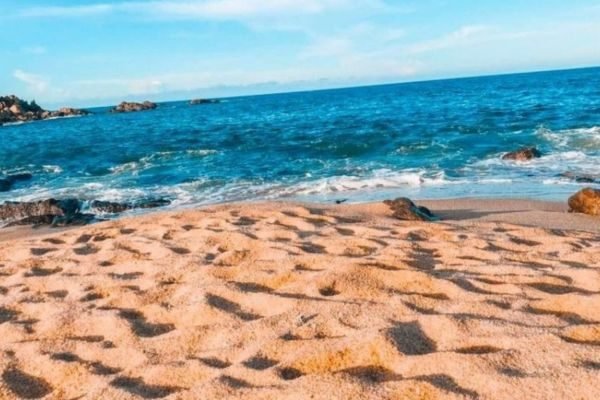
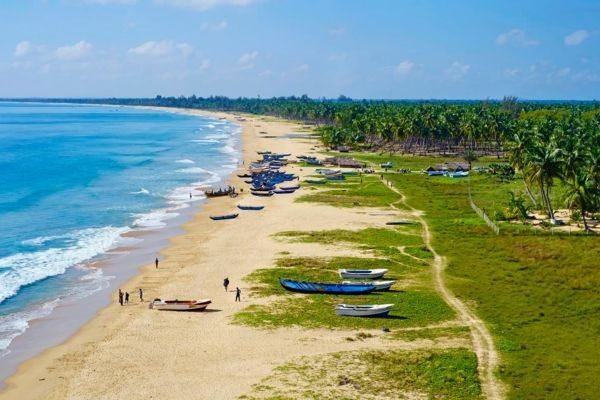
0 Comment